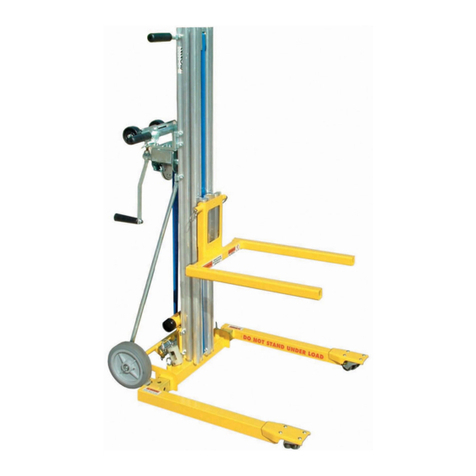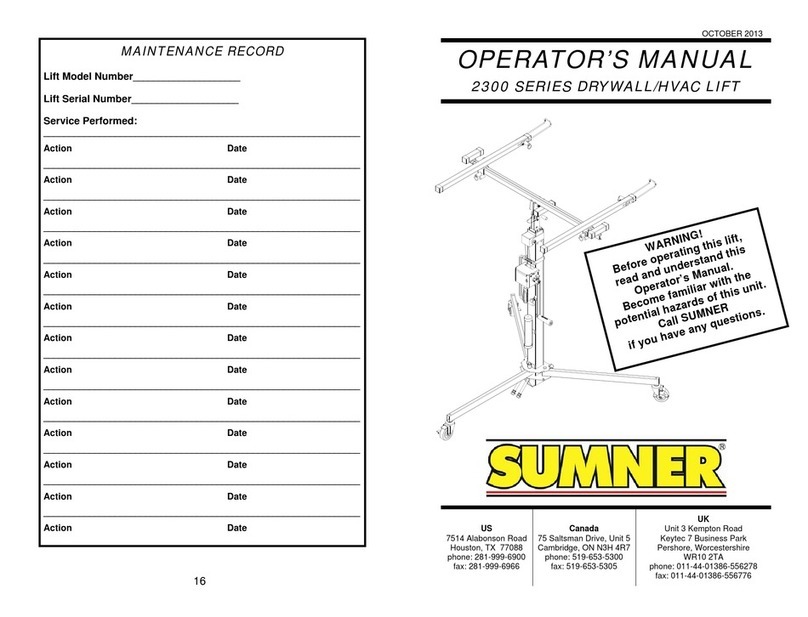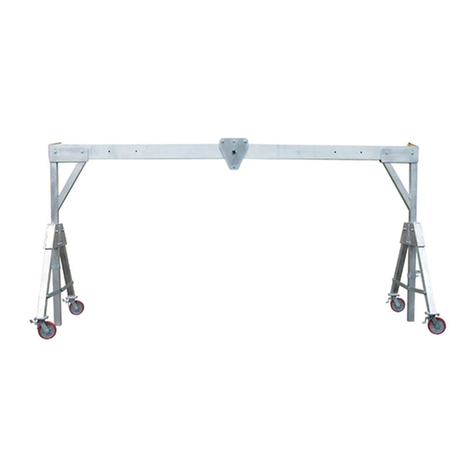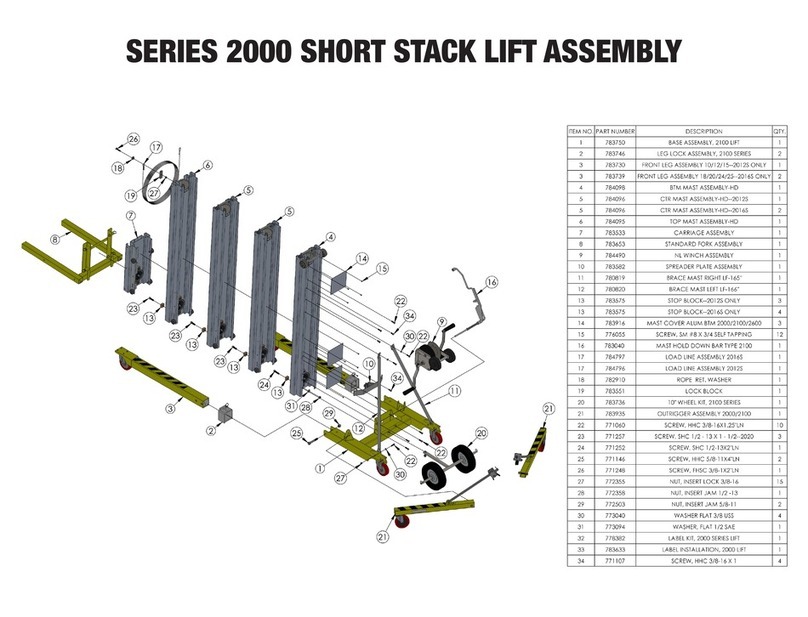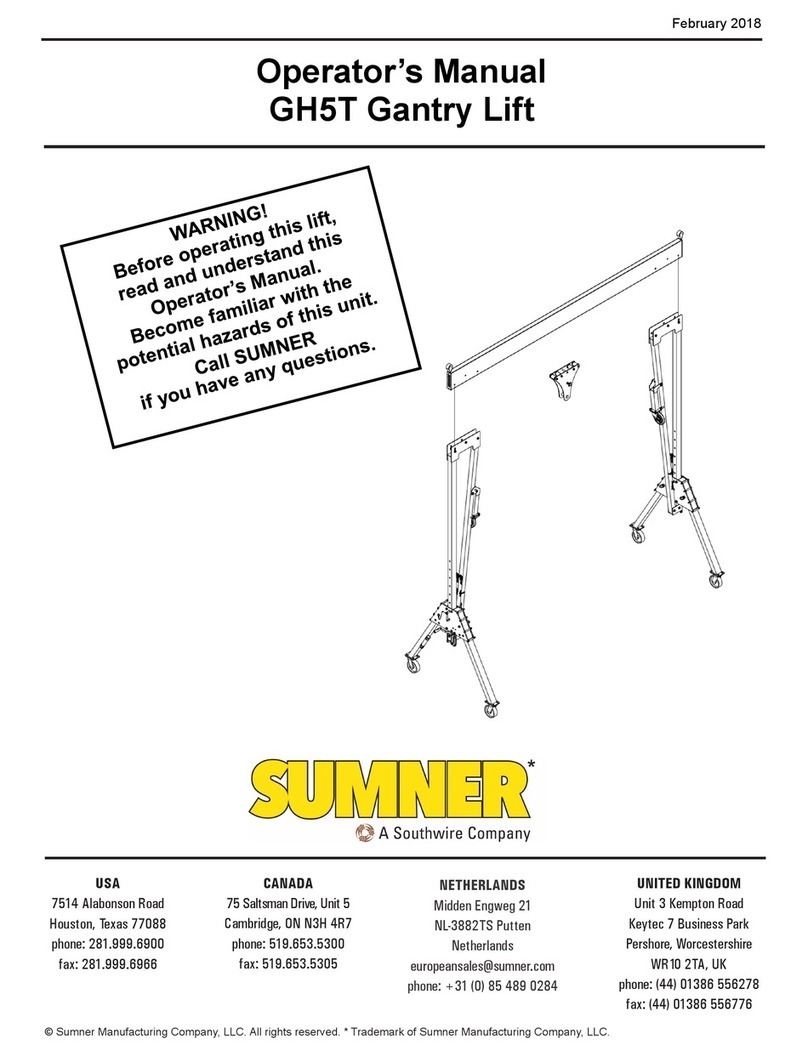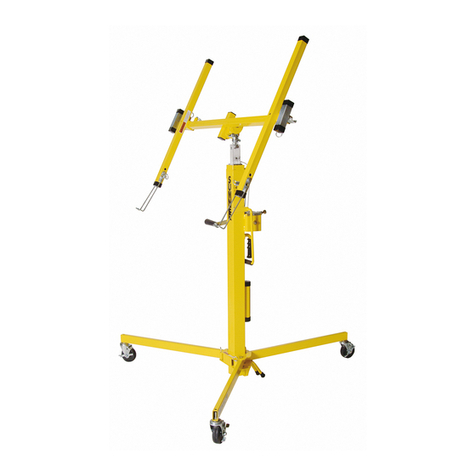
6
ASSEMBLY INSTRUCTIONS
1. Turn base upside down.
2. Insert the four casters into the base legs.
3. Secure the casters into the base by
installing the four supplied setscrews into
the base legs and then tighten with allen
wrench. Ensure screw is tightened onto
caster stem.
4. Turn base over and lock caster brakes.
5. Insert mast assembly into base assembly
socket with winch to rear of base, rear
being the side of base with the shorter
legs.
6. Ensure base latch is engaged.
7. Release tension on lifting cable by turning
the lower shaft on the winch counterclock-
wise. Remove clevis pin and clevis. Now
lower the lift cable so end of cable can be
reached by operator.
8. Attach counterweight and line shackle
directly to loop on end of lift cable.
OPERATING PROCEDURE
WARNING
Operators should be thoroughly
familiar with the preceding safety
precautions before attempting to
operate this equipment.
NOTE: Always lower mast assembly to the
lowest possible position prior to moving unit.
1. MOVING ROUST-A-BOUT TO
WORK AREA (NO LOAD)
1. The load line shackle
should be attached to
winch mount bracket
prior to transporting unit
to prevent the cable
from swinging and
striking operator or
bystanders.
2. Attach winch handles to
both sides of winch,
which will allow them to
be used as a handlebar to steer the unit.
WARNING
Roust-a-Bout should only be
operated on level and smooth
surfaces to avoid tipping and
possibility of operator injury.
3. Release caster brakes.
4. Grasp winch handles and make a
forward “S” motion to align casters for
forward movement to work area.
2. MOVING ROUST-A-BOUT TO
WORK AREA (WITH LOAD)
1. When the Roust-A-Bout is used to
transport a load, the load should be
placed on the base legs for positive
control of the lift.
2. The loaded Roust-A-Bout should only be
moved in the forward direction,
whenever possible.
3. Repeat steps 2, 3 and 4 from previous
section.
3. Elevating Mast
NOTE: Mast should be elevated to
required height prior to lifting any load over
500 lb (225 kg).
WARNING
“Guy Lines” must be used anytime
mast is elevated over 20 ft (6.1 m)













